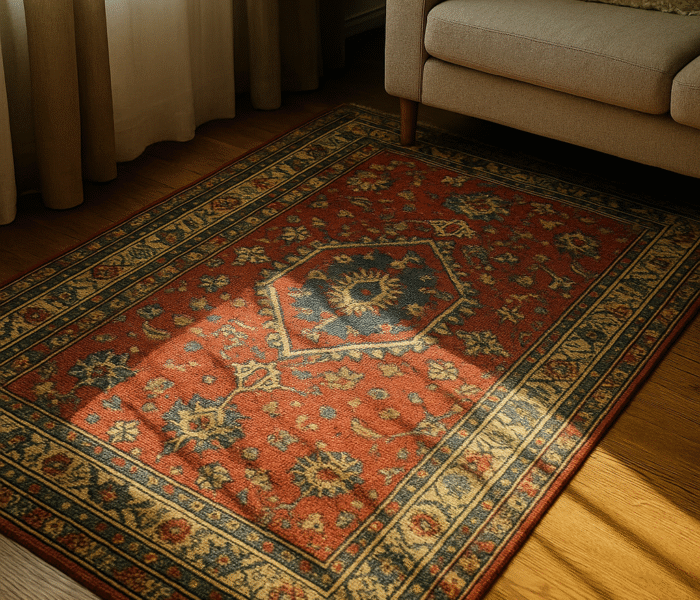Blog
Sunlight, Foot Traffic, and Pets: How to Protect Legacy Rugs at Home
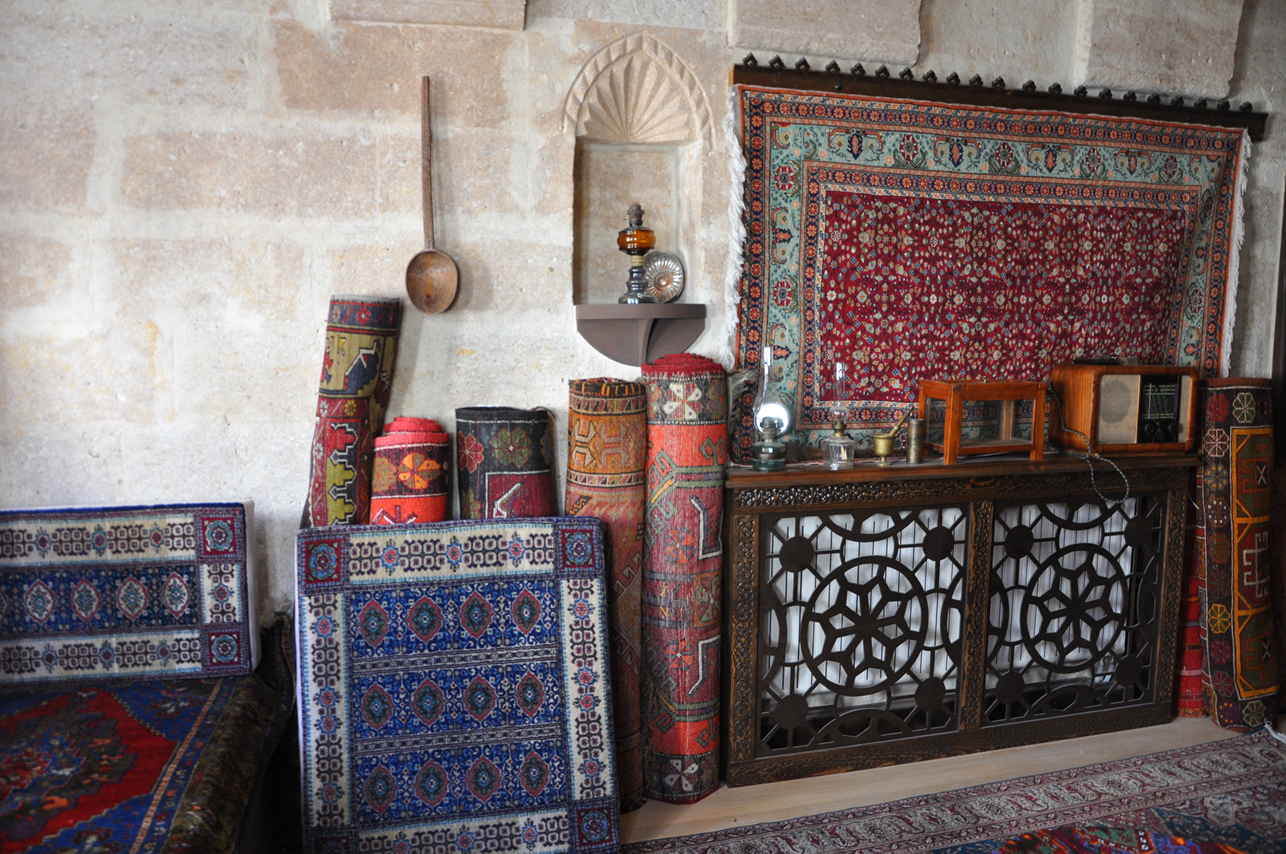
Legacy rugs are more than decorative objects; they are cultural artefacts rich in symbolism, material heritage, and artisanal legacy. Whether you're caring for a hand-knotted Anatolian rug woven by a Yörük weaver or a flatwoven kilim from Muğla, understanding how to protect your rug from everyday household threats like sunlight, foot traffic, and pets is crucial.
Sunlight: Fading the Past
How UV Rays Harm Legacy Rugs
Sunlight, especially direct UV exposure is one of the most destructive forces to natural dyes. Unlike synthetic dyes, the vegetal dyes used in rugs (such as kök boya, madder root, indigo, and walnut husk) are more sensitive to light degradation.
Long-term exposure can:
- Fade reds, blues, and yellows unevenly.
- Dry and weaken natural fibers.
- Diminish motif visibility, especially in softer hues like light brown.
How to Prevent Damage:
- Avoid placing rugs in direct sun, especially under bay windows or skylights.
- Rotate the rug every 3–6 months to even out exposure.
- Use UV-filtering window films or sheer curtains.
- For valuable rugs, consider museum-grade display with UV-resistant glass.
Foot Traffic: Wear and Tear from Daily Life
Why Some Areas Suffer More
Hallways, doorways, and under dining tables are notorious stress zones for legacy rugs. Over time, the pile flattens, dyes wear away, and warp/weft threads become exposed. Particularly in high-knot rugs, this leads to structural compromise.
Smart Positioning and Padding Tips:
- Use legacy rugs in low-traffic zones like bedrooms or studies.
- Invest in natural felt or rubber padding to minimize slippage and cushion pressure.
- Avoid rubber-backed mats that can trap heat and moisture.
- Remove shoes—especially with heels or rubber soles that abrade fibers.
- Vacuum gently without the beater brush and avoid dragging furniture across the rug.
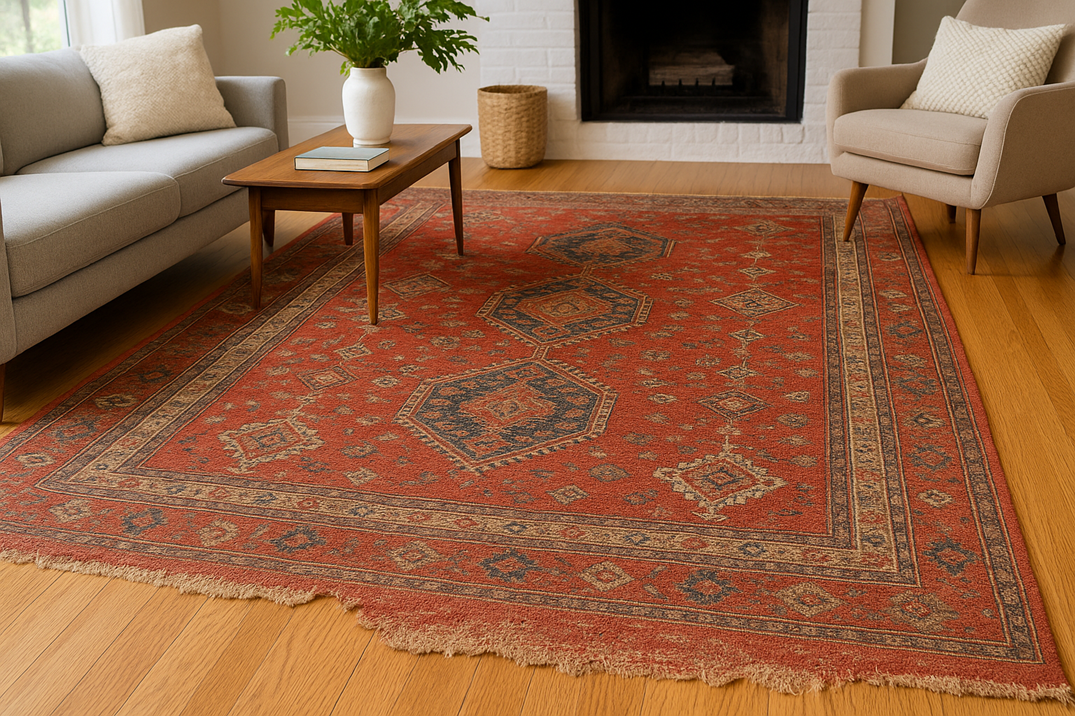
Pets: Our Beloved but Clumsy Roommates
While dogs and cats are like our family members, they are also the nemesis of wool.
Risks from Pets:
- Urine contains ammonia and acids that cause irreversible color bleeding.
- Scratching and nesting can pull loops, fray edges, or break warp threads.
- Shedding and dander penetrate deep into pile or slit weave kilims.
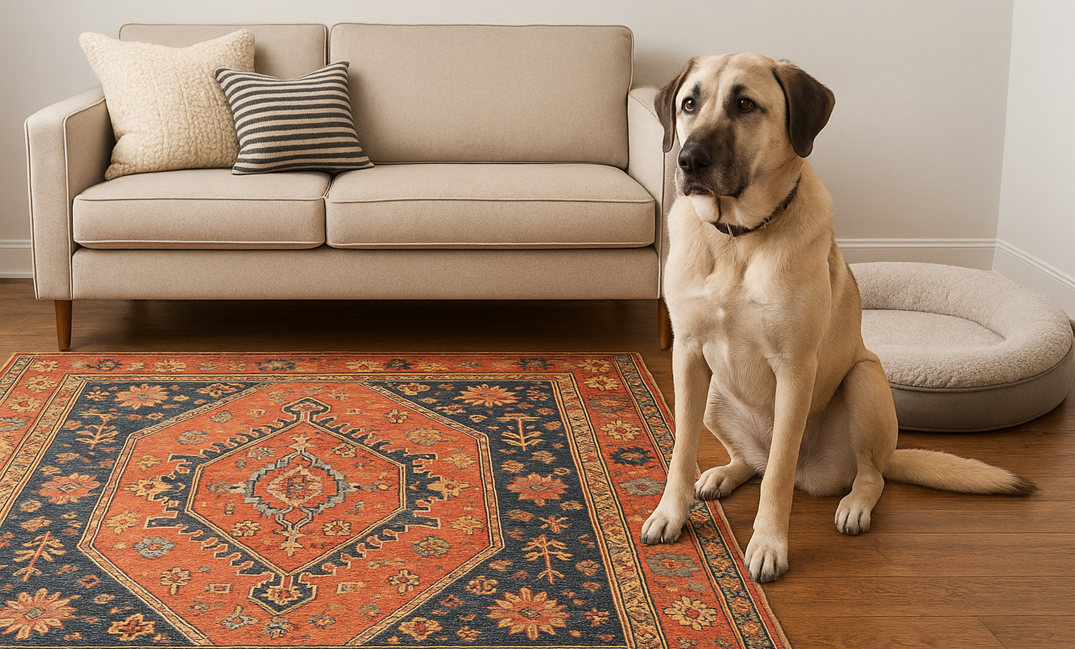
Protective Measures:
- Train dogs and cats to stay off rugs or provide alternatives (dog beds, mats).
- Clean paws after walks, especially in wet or muddy weather.
- Use odor-free, non-toxic pet deterrent sprays.
- Blot accidents immediately with clean white cloths and cold water only; never use heat or soap.
- Air out rugs regularly to prevent buildup of pet dander.
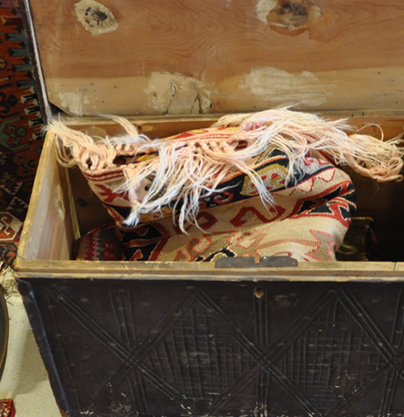
Repair Before Replace
Rugs with minor wear or fringe damage can often be repaired by traditional methods, using matching wool and knotting techniques. Ask for:
- Weft and pile reweaving using naturally dyed yarns.
- Edge binding reinforcement.
- Spot washing with artisan-approved methods.
Never dry clean, steam clean, or chemically treat legacy rugs unless supervised by a textile conservator. Traditional Anatolian methods involved gentle hand washing in streams using olive oil soap and drying flat under shade; a practice still alive in some weaving communities.
The cultural soul of a handwoven rug deserves respect and protection. With smart placement, gentle care, and preventive steps, your legacy rug will age gracefully, becoming a living document of history under your roof.
"These are not just rugs. They are prayers, dreams, and bloodlines woven into wool."
Arış Symposium, 2023

